Lead artist for Riot Games, Devon Fay, has a unique understanding of what it takes to create believable and dynamic digital environments. Fay graduated from the Gnomon School of VFX and went on to collaborate on successful projects at impressive companies such as Blizzard Entertainment, Neversoft Entertainment, Infinity Ward and finally, Riot Games. Within the film department at Blizzard, Fay worked on matte-painted environments for projects such as Starcraft II: Wings of Liberty; World of Warcraft: Cataclysm; Diablo III; World of Warcraft: Mists of Pandaria; and Starcraft II: Heart of the Swarm. Fay took on new challenges and techniques when he transferred his career to real-time environments for games and worked on Call of Duty: Ghosts and Call of Duty: Advanced Warfare for Infinity Ward. Fay integrates his skills into his teaching methods and shares his vast amount of knowledge as an online instructor for Gnomon. Fay has been recognized for his awards and achievements in various publications such as 3Dcreative Magazine and 3Dworld Magazine. To connect with Devon Fay, visit his ArtStation, Linkedin, and Gnomon Tutorials.
GW: You’ve been immersed in various aspects of art including matte painting, environment art, and sculpting. What are the key differences between the daily demands on those three?
DF: The concepts are actually very similar: focus on composition, shape, read, value, and contrast, etc. The obvious difference being the scale of the work. In my opinion, matte painting is both the easiest and the hardest. It's easy because the camera is ‘fixed’ and you know exactly what you are working with. It’s hard because the composition and ‘read’ has to be perfect. Even with sculpts and props, however, the same things should be considered. Flow of the shape, eye rest, the shape itself, value and contrast, etc., all need to be carefully considered, just in a much smaller form (and usually as just one piece to a larger piece).
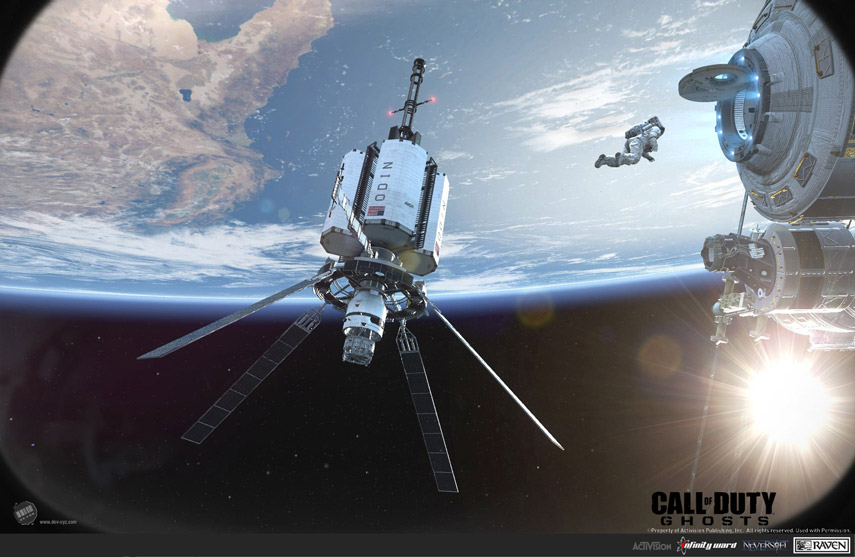
GW: How does pre-rendered differ from in-game environments?
DF: Obviously, the workflow, goals, and constraints are different but I find that the base principles are pretty much the same. Composition, value, color, etc., are always the most important thing with environment art, no matter what the form.
GW: The theme you achieve in your art seems to always stand out and project an “immersive-ness” so to speak. What helps you achieve that level of success?
DF: I am glad you picked up on that. I spend a lot of time making something feel believable, even if it’s a science fiction or fantasy piece. I tend to lean on two main techniques to help with that:
1) Reference
2) Keeping it grounded.
For reference: I am constantly looking around me, taking in how things are built, how things get worn out, and how people have interacted with spaces (stains left behind, garbage in corners, and the like). Then using all that info and reference whenever I make anything.
For keeping things grounded: This is a little more subjective, and depends on the project. But as an example, in my Alleyway scene, if you remove the robot, it could be any random alleyway in Japan (or vaguely Asian, which was the intent). Adding just the right amount of ‘science fiction’ on top of that is what makes it feel fantastical. Similar details could be said for my Retro Space Common, but almost in an opposite fashion. It has a very ‘sci-fi’ architecture, so I was sure to add a lot of human, lived-in touches to the scene to keep it grounded and believable.
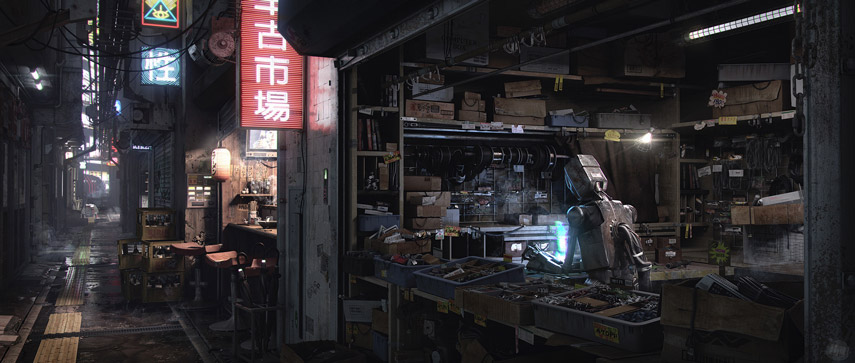
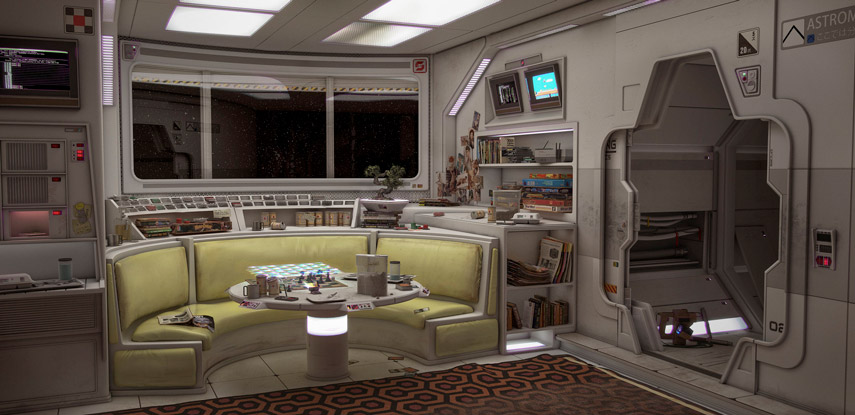
GW: You’re accustomed to a ton of different software including Maya, ZBrush, Radiant, Photoshop, VRay, etc. Is there any new software or not yet-released technology you’re excited by?
DF: It’s almost cliché to say at this point, but I am honestly very excited for VR. I have experimented a little bit, and it's just so amazing to be able to create spaces that you can actually experience! I can't wait to see people push that art-form even further. I have a feeling it's going to go places none of us can imagine.
GW: You’re an instructor to boot! What kind of different demands does teaching require as opposed to working solo?
DF: Teaching is really awesome, but is very different than work. It can sometimes be difficult to juggle teaching along with a fulltime job. That said, when I was going to school for CG and art I ALWAYS appreciated the teachers that took the time to come to class every week and teach all of us eager nerds. Even back then, I knew that (once I was able) I would come back and teach and try and pay it forward to the next generation of eager CG nerds.
As an instructor, I focus on really setting time aside to be prepared for class, and I always try to take extra time to understand the students and what they need. I try and be approachable and answer every question, not just during the class, but afterward as well. Students often have curiosities about the industry and such. I have made some great relationships through teaching, and it's always awesome to see my students go on to successful careers.
GW: Going back in time… How was your experience as a Gnomon student? Were there specific aspects you can recall then that still resonate today?
DF: I loved going to Gnomon. I was lucky enough to not have to work at the time and just focus all my attention into school. This was key to my personal success. I was able to basically live at Gnomon. I was there all day for class, and then I would spend all night in the computer labs. And it was in those computer labs where I met all my closest friends. There were lots of late nights and tight deadlines with a ton of like-minded people. Knowledge sharing, joking, shit talking and hazing were all equally common. It was a great experience! We would all push each other, share war stories about past terms, and just hang out. Some of my fondest memories were during those late nights in the computer labs. I am still friends with many of those people to this day.
GW: Are there steps in an artist’s workflow that should not be skipped? For example, have you ever found yourself overwhelmed and realized going back to X, Y, or Z, was needed?
DF: This is easy. The block-out or sketch. This comes down 100% to composition. It's so tempting to just move forward and start making things. It's exciting to start a new project and make new props and textures and such. It's often however, that the basics have been rushed and overlooked. Composition should ALWAYS be handled first in the block-out (or sketch, or painting) and the rest of the image should come once that is solid. In a lot of cases, these steps feel like they take too long, and it is a hard process to get just right, but it will always lead to a better overall image when tackled in full first.

GW: Is there a particular project at a big company like Blizzard Entertainment that will always stand out to you (resonate with you)? Is there a team moment from an experience at a company that influenced you heavily?
DF: There is, and it was actually at Blizzard. It's interesting because when you are working on a project for so long, you can start getting in your own head and start thinking that the project is “bad” or “not going well”. As artists, we tend to really focus on what could be better and not see what is already good. Also in a big production, things change...a lot. So, again, it's easy to focus on “what it could have been” rather than “what it is”.
All that said, I remember working on a cinematic for Blizzard, and the process was long, with lots of changes. During production, I really thought it was “bad”. We wrapped it up, called it done, and moved onto the next one. A month or so later, at BlizzCon, Blizzard premiered that same Cinematic at the opening ceremony. Seeing it again with fresh eyes after so many weeks was like seeing it for the first time. And it was on the big screen. This made me realize how awesome it actually was! I was just too close to it during production and got too wrapped up in the “what it could have been” trap.
These days I really try and remember that. All projects go through changes, and even have their “ugly” phases. I try and hone in on what's important and just try and make it as good as it can be now.

GW: Do you foresee any interesting changes impacting specifically matte painting and environment art in the future?
DF: I see two things mainly. The first is already here: scan data. Using scan data has sped up and increased the quality of environment art A LOT the last few years. It streamlines the process, and gives a great baseline to make realistic art.
Secondly: neural networks (which I have kind of been nerding out on lately). It's basically a computer learning technique. What is so interesting is the direction companies and scientists are taking with it lately. There are a lot of examples of programs creating 3d objects from a single photo or even drawing and using those to speedup rendering and even simulations. As CG gets more and more complex, and the demands get greater and greater, it will be tools like these that are going to enable us to finish those tasks. Check out this YouTube channel for more information on neural networks: HERE
GW: Are there annual events, conferences, or tutorials that you’d recommend to others?
DF: I have been going to Trojan Horse was a Unicorn for 4 years now. It’s a crazy name, but it’s a fantastic conference. It has changed over the years, but I think of that as a natural evolution. It is very art and community focused and the experience has always been great. I always leave the conference feeling like I came away with something special and, of course, I always feel very inspired.
GDC is also high on my list. Every year, it is astounding to see all the studios sharing knowledge. You get to see how all your favorite games were made from that year. It's very fun!
GW: You’ve mentioned going back to perusing your own personal art books. Are there reference materials that have made a lasting impact on you? And/or certain artists or art books that you’d go back to over and over again?
DF: There are a ton. My biggest influence in CG has been the games Myst and Riven. I have a book called “From Myst to Riven” that I flip through all the time. It has a lot of art in it as well as anecdotes on the development of the projects.
Some of my other favorites are a few Japanese photo books my wife got me. They aren't all in the same series, but they are all awesome. Most of them are photos of abandoned places around the world, mostly in Japan. It's pretty amazing to see the complex interaction that nature has on manmade structures, especially when left unchecked. Those books provide a TON of inspiration and reference.
Honestly, I love pretty much all art books. I can find inspiration in pretty much any book full of any type of art. And from other types of published art as well such as the Penguin Train. ☺
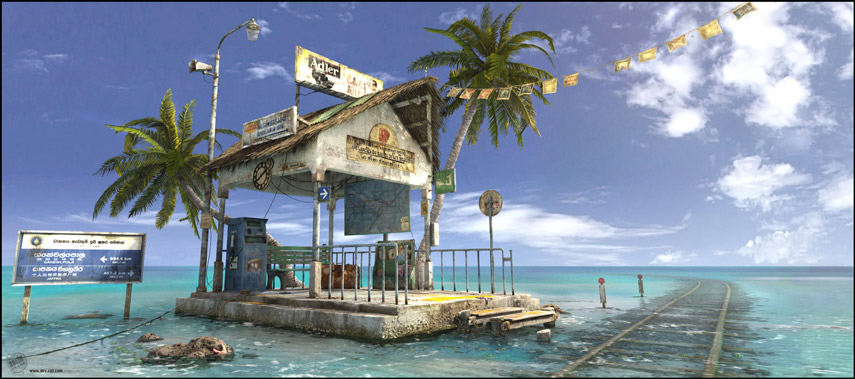
GW: Is there any type of art book or resource missing in the industry you’d like to see created? And/or is there any type of art book/resource you’d like to be a part of in the future?
DF: I think the industry is generally pretty good at creating promotional, inspirational, and educational content. Probably better than almost any other industry. Add Kickstarter on top of that and pretty much anything you could possibly want is out there.
Personally, I have always loved collecting art books and I continuously find them useful and a joy to peruse. I have actually never been part of a collaborative art book, but I would love to one day. To me it would be a win win, I could collaborate with other talented artists, as well as hopefully pay a little bit more inspiration forward.
GW: Devon, thanks very much for sharing your perspective and insight! Your work is inspiring and your determination to help others is not only commendable but also much appreciated.

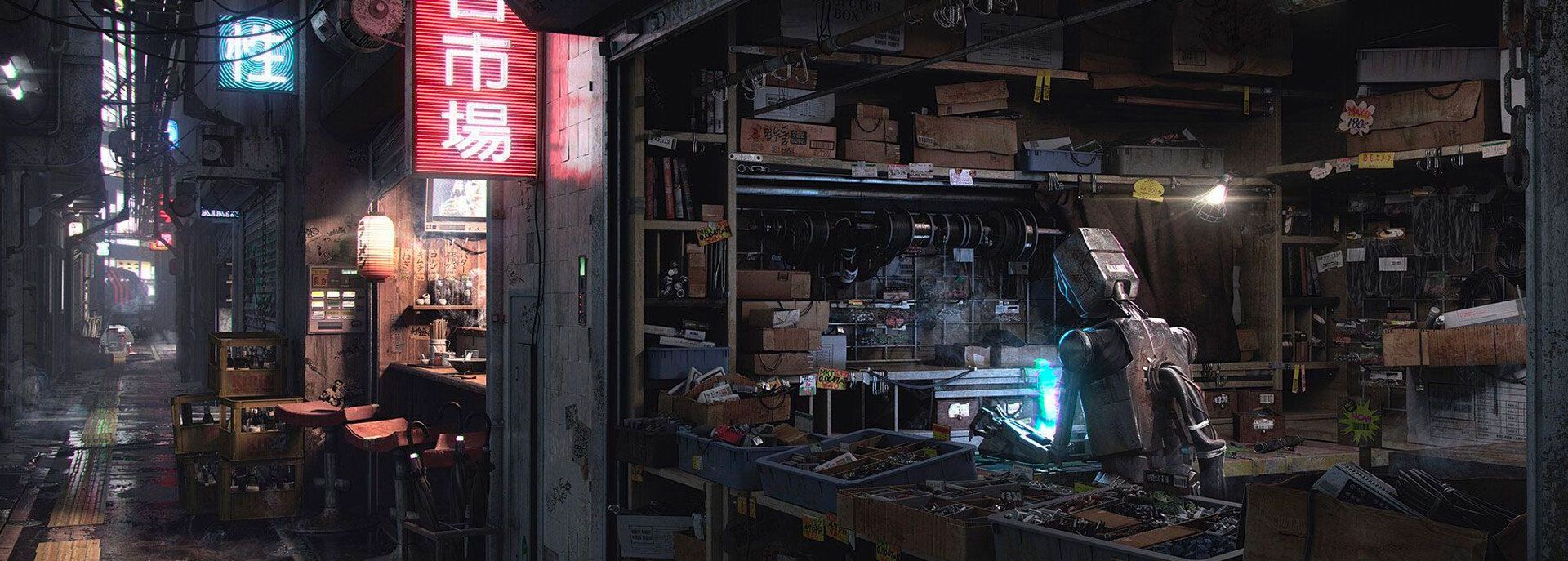


Related News
Balancing Elegance with Aggression: An Interview with Chris Beatty
Nov 21, 2024
The Artist Behind the Characters: An Interview with Amy Ash
Nov 01, 2024
Blazing a path to success: Meet Wētā FX’s Ganesh Lakshmigandan
Jun 26, 2024